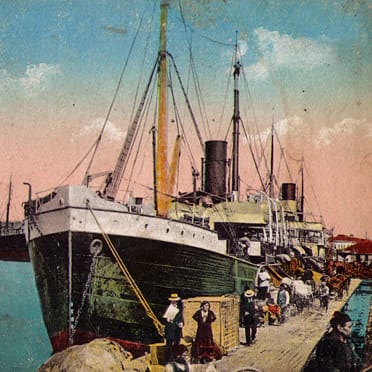ON THE INDUSTRIAL HISTORY OF BULGARIA
Dramatic political upheavals defined Bulgaria’s economic history and for many years impeted the path to industrialisation. Although a textile factory was founded in Sliven in 1834, the first in the entire Balkans, the country remained a predominantly agricultural nation for over one hundred years. Additionally, farmers using outmoded methods produced for their own needs, not for the market, and did not generate surpluses. Therefore, when Bulgaria attained independence from the Ottoman Empire in 1878 it lacked the capital required to build its industry: even then, the country was dependent on foreign investment. Still, further textile factories were established – such as in Gabrovo, the traditional centre for wool processing – along with food processing operations. The first railway line was built in 1866: from Russe on the Danube to the Black Sea port of Varna, the departure point for steamers to Constantinople (today Istanbul). Starting in 1888, the Orient Express offered services from Vienna via Belgrade and Sofia to Constantinople, incidentally linking Bulgaria’s two great urban centres of Sofia and Plovdiv. This same centuries-old route also developed into the most important north-south road link in this geographically arduous country.
The expansion of food and textile manufacturing after World War I was again financed by foreign investors. German influence steadily increased from 1934 on, with the result that economic policy was ultimately dominated by Germany. Thus, the transition to a centrally controlled economy directed by the Soviet Union after 1944 was relatively uneventful – whereas the uncompromising dedication of all productive resources to the industrialisation of the country demanded by the USSR was all the more drastic. The government mobilised all available resources to create new steel works, machinery factories and chemical plants out of nothing while neglecting the already backward agricultural sector, resulting in severe shortages for the population.
The nationalisation of all businesses was completed in 1948. The new flagship projects included a metalworking combine in Pernik, where coal had been mined since the 19th century, as well as chemical plants and coal mines in the vicinity of the new model socialist city Dimitrovgrad. Most prestigious by far was the gigantic steel plant in Kremikovci, which cost enormous sums to build, was never operated at full capacity since its commissioning in 1963 and still produced more steel than was needed. The government also promoted shipbuilding in Varna and Burgas on the Black Sea, which mainly supplied the Soviet Union. Forklift manufacturer Balkancar, which is still in business today, is one of the successes in the machinery sector.
By the 1960s, this costly feat of strength had pushed Bulgaria into the ranks of the industrial nations, but this growth required a constantly increasing demand for raw materials and labour. The Soviet Union supplied petroleum, coal and iron ore at special prices and in return purchased the lion’s share of Bulgaria’s exports. As the country could not compete with western economies, plants and products were never modernised. Though the availability of consumer goods improved in the 1960s and 1970s, there was no money available for the maintenance of housing or transportation infrastructure. Corrections in economic policy failed to materially improve matters. In the 1980s, the government attempted to develop a domestic computer industry, and intensified trade with the West. The result was a rapid increase in foreign debt. The opening of the Black Sea coast for tourism provided the only bright spot.
Thus, the collapse of the Eastern Bloc plunged the country into a severe crisis. Energy imports became virtually unaffordable, unemployment surged, and inflation skyrocketed. Since then, elected governments have privatised a large part of the nationalised companies and stabilised the economy with the help of international lenders. Accession to the European Union in 2007 triggered modest growth. Ports and highways were successively improved. A second bridge over the Danube – following the “Friendship Bridge” in 1954 – opened in 2013. Currently, Bulgaria is attempting to attract foreign companies using low corporate tax rates as an incentive, but more technically sophisticated industries are still few and far between. The added value of export products such as clothing, shoes and steel remains low. The country is still dependent on Russian natural gas, and over 20 % of Bulgarians live below the poverty line.


